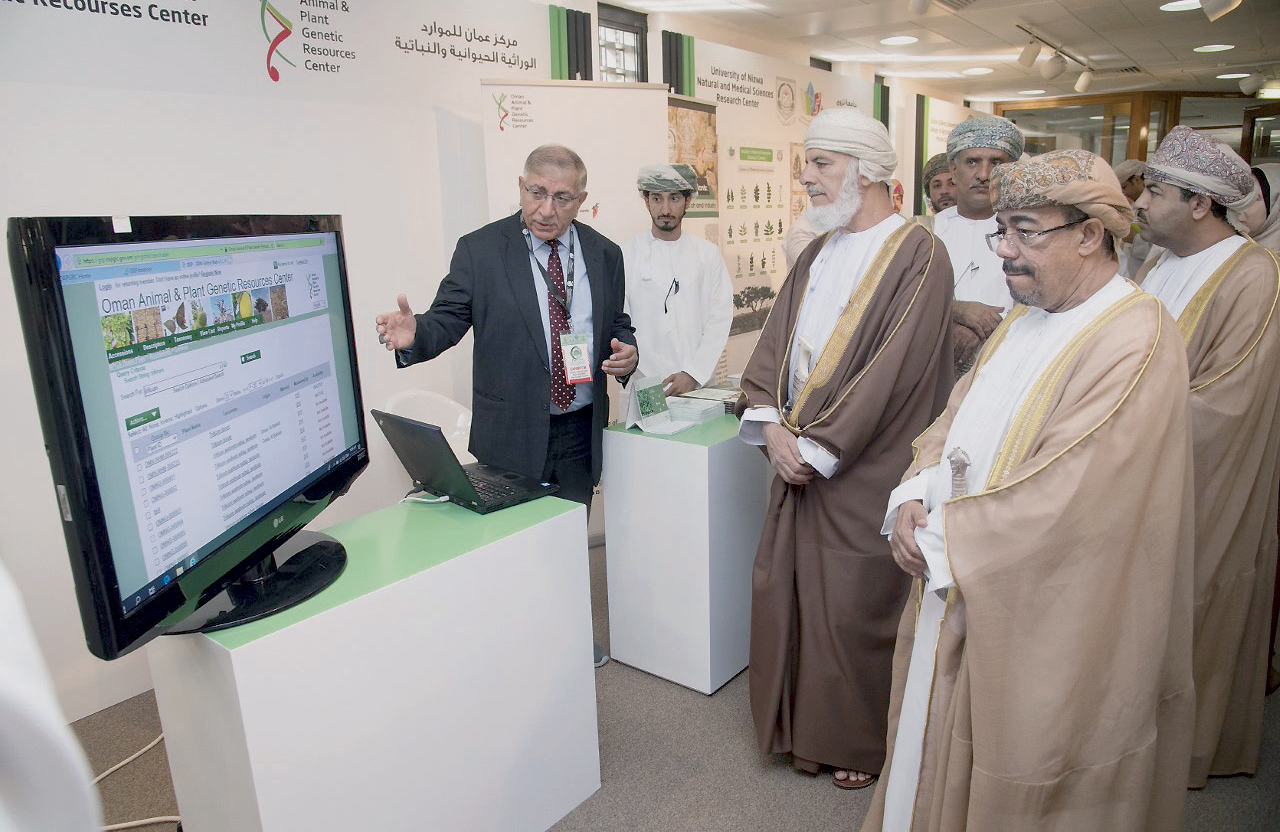

Muscat, Oct 30 - The Sultanate is blessed with 250 reported species of medicinal plants that could be decisive in treating some of the world’s current and future diseases, said Prof Ahmed al Harrasi, Vice-Chancellor, Graduate Studies & Research at the University of Nizwa. Among these medicinal plants, frankincense comes on the top, said Prof Al Harrasi, also the Conference Chair, at the first ‘International Conference on Frankincense and Medicinal Plants: Recent Advances in Research and Industry’, which began at Sultan Qaboos University’s Conference Hall on Tuesday. Among the 19 species of frankincense trees reported worldwide, Oman hosts one of the best quality frankincense, he said at the three-day conference, presided over by Shaikh Mohammed bin Abdullah al Hinai, State Adviser.
It was organised by SQU, University of Nizwa, the Oman Animal and Plant Genetic Resources Center and the Quranic Botanic Garden, Qatar.
Prof Al Harrasi said Oman’s diverse flora and marine species coupled with the demand for natural resources makes it an ideal location for conducting studies on natural products. Dr Rahma Ibrahim al Mahrooqi, SQU Deputy Vice-Chancellor for Postgraduate Studies & Research, in her speech, said medicinal plants have played a key role in the lives of people across the Sultanate before the establishment of a universal healthcare system.
She said the country is blessed with a rich biological/environmental biodiversity that includes a range of medicinal plants.
“The medicinal plants have the potential to offer alternative approaches to drug development and treatment of diseases.” “Despite the great strides Oman has made towards modernization, one need not look far to find the examples of the importance of medicinal plants in the lives of Omanis. These include the traditional medicinal uses of clove, cinnamon, garlic and so on, for a variety of ailments ranging from colds and fevers to stomach aches and insect bites,” said Dr Rahma. She said frankincense, a natural substance identified with Oman, has a rich history and varied use, including as incense, perfume, insect repellent and in traditional medicines.
“One of the main aims of the conference is to promote the exchange of knowledge and information about medicinal plants, including frankincense,” said the Deputy Vice-Chancellor.
Fatma al Khulaifi from the Quranic Botanic Garden, a member of Qatar Foundation, in her speech, said the Quranic Botanic Garden contains many medicinal plants collected from various geographical habitats, including tropical desert and Mediterranean.
The conference aims to build a network of academics, producers, business people, consumers and other stakeholders who share an interest in field-related developments.
It has brought together international experts in medicinal chemistry, micro-and molecular biology, horticulture and medical sciences as well as frankincense-based industries from 25 nations.
It features eight plenary talks, four featured talks and 42 oral presentations.
The conference includes an exhibition where a number of organisations are represented. These include the Public Authority for Craft Industries, the Oman Animal & Plant Genetic Resources Center, the Oman Botanic Garden, the Environment Society of Oman, the Natural & Medical Sciences Research Center at the University of Nizwa, the College of Agriculture and Marine Sciences at Sultan Qaboos University and the Qatar Quranic Botanic Garden.
The other entities involved in the exhibition include Al-Shua’lah Perfumes, Origo Integrated Projects, Neal’s Yard Remedies and Business International Group.
These organisations are showcasing samples of resins and medicinal plants, fragrance and beauty products, and the tools used to distil frankincense.
Another part of the exhibition is devoted to the conference posters arranged by more than 30 researchers from Oman and overseas.
Oman Observer is now on the WhatsApp channel. Click here



